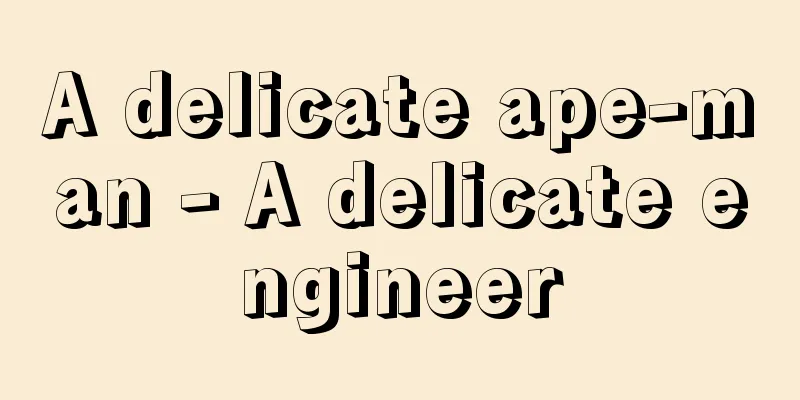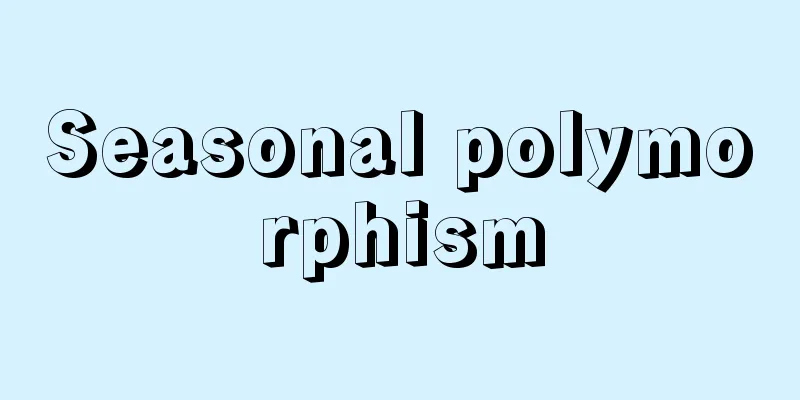Life guidance - Seikatsushido

|
In Japan, the term "seikatsu shidou" (life guidance) is used with a great deal of ambiguity. Broadly speaking, there are three ways of thinking about it: (1) class-based life guidance - the seikatsu tsuzurikata method, (2) collectivist life guidance - class group building, (3) student guidance-based life guidance - guidance, etc. However, there is a considerable difference in opinion between the standpoint of class building in (1) and class group building in (2) and the guidance-oriented standpoint of (3). The standpoints of class building in (1) and class group building in (2) are often referred to as "seikatsu shidou" (life guidance), and the standpoint of guidance-oriented life guidance in (3) is often referred to as "student guidance." For the definition of Seikatsu Guidance in this article, I would like to use the idea of Professor Miyasaka Tetsufumi (1918-65) of the University of Tokyo, who played a leading role in the study of Seikatsu Guidance in Japan after the Second World War. This is because it touches the core of the matter. His definition is that "the teacher's job is to build a close relationship with the children, to understand the way each child sees, thinks, feels, and acts in reality, and to make this understanding a part of the children themselves and each other, thereby building a group based on a rich understanding of humanity, and to raise each individual's way of life (both life awareness and life practice, that is, in a unified manner without separating the two) to a more valuable one through active participation in the activities." [Kazuo Nishine] HistoryA pioneering form of life guidance can be found in the educational policy of private schools established from the end of the Meiji period to the Taisho period (for example, Seijo Elementary School in Tokyo), which adopted the principle of "small enrollment" and focused on personal contact between teachers and students, individualized instruction, and respect for individuality. The theory of life guidance, which was the crystallization of Japan's unique educational philosophy, arose from the development of writing education from the end of the Taisho period. It signified the emergence of a new methodological concept that attempted to reconstruct children's ways of seeing, thinking, feeling, and behaving by coming into contact with the real selves of children, which traditional school education could not come close to. The theory and practice of life guidance can be divided into three periods overall, with the period before World War II being divided into the early and late periods, and then the postwar period. Life guidance in the early period placed emphasis on forming attitudes that would develop children as human beings through the free expression of their ways of looking at things, thinking, and feeling. In contrast, life guidance in the later period, from 1929 (Showa 4) and 1930 onwards, was developed in conjunction with the development of the Life Spelling Education Movement. Therefore, it can be distinguished from life guidance in the earlier period in that attitudes themselves are first formed through children's purposeful, active way of life that transforms their environment (Kinoshita Shigemitsu, Professor at Osaka Kyoiku University (1936- )). After the Second World War, life guidance was restarted with the goal of individual autonomy and democracy. The 1947 Course of Study placed "free research" at the center of life guidance in schools. Those who consider life guidance from this perspective say that all instruction in subjects is learning guidance, and instruction outside of subjects is life guidance, and take the position that life guidance is defined as a domain concept. However, in 1958, with the partial revision of the Enforcement Regulations of the School Education Act, the domain of the curriculum was organized into four domains: each subject, morality, special educational activities, school events, etc. And domains other than subjects became a place for learning guidance as well as a place for life guidance, so it became difficult to define life guidance as a domain concept. In this case, it was defined as a functional concept, listing various functions as the content of life guidance. [Kazuo Nishine] assignmentThe content of life guidance and the results of research are complex and diverse. However, since both positions share the common goal of developing people based on democratic principles, it is urgent to transcend each of these ways of thinking and establish a unified philosophy and method. In addition, when it comes to "domestic violence," "school violence," and "bullying," which have become problems in recent years, it is important to first accurately grasp the reality of the problem, rather than simply providing symptomatic treatment. In the case of "bullying," the motive is not always clear, but bullies lack emotional aspects such as compassion and empathy for others. Therefore, the current task of life guidance is to provide guidance and support at home and at school so that children can steadily achieve the necessary personality development tasks at each stage of their growth. [Kazuo Nishine] "Life Guidance and Moral Education" by Miyasaka Tetsufumi (1959, Meiji Tosho Publishing)" ▽ "Encyclopedia of Modern Japanese Educational History, edited by the Editorial Committee for the Encyclopedia of Modern Japanese Educational History (1971, Heibonsha)" ▽ "Modern Esprit 172 Life Guidance" edited by Sakamoto Shoichi (1981, Shibundo)" ▽ "Theory and Method of Life Guidance" by Sakamoto Shoichi (1978, Bunkyo Shoin) [Reference items] | | | | | |Source: Shogakukan Encyclopedia Nipponica About Encyclopedia Nipponica Information | Legend |
|
日本における生活指導ということばは、きわめて多義的に使われている。大きくいって次の三つの考え方がある。(1)学級づくり的生活指導―生活綴方(つづりかた)的方法、(2)集団主義的生活指導―学級集団づくり、(3)生徒指導的生活指導―ガイダンス、などである。しかし、(1)の学級づくりや(2)の学級集団づくりの立場と、(3)のガイダンス的な立場とは、かなり見解を異にしている。(1)の学級づくりや(2)の学級集団づくりの立場を「生活指導」ということばでよび、(3)のガイダンス的な立場の生活指導を「生徒指導」とよぶことが多い。 本項における生活指導の定義としては、日本の生活指導の研究で第二次世界大戦後、指導的役割を果たした東大教授宮坂哲文(てつふみ)(1918―65)の考え方を取り上げたい。これは、もっとも核心に触れているからである。その定義とは「教師が子供たちと親密な人間関係を結び、1人ひとりの子供の現実にいとなんでいるものの見かた、考えかた、感じかた、ならびにそれらに支えられた行動のしかたを理解し、そのような理解をその子供たち自身ならびにかれら相互のものにすることによって、豊かな人間理解にもとづく集団をきずきあげ、その活動への積極的な参加のなかで1人ひとりの生きかたを(生活認識と生活実践の双方を、つまり両者をきりはなさずに統一的に)より価値の高いものに引き上げていく教師のしごと」とするものである。 [西根和雄] 沿革生活指導の先駆的形態とみなされるのは、明治末期から大正期にかけて創設された私立学校(たとえば東京の成城小学校)の教育方針にみられる「小定員主義」のなかの師弟間の人間的個人的接触、個別指導、個性尊重の理念においてである。日本独自の訓育思想の結晶であった生活指導論は、大正末期より綴方教育の発展のなかから生起した。そして、それは、伝統的な学校教育が肉薄しえなかった子供のありのままの姿に触れることを通して、子供のものの見方、考え方、感じ方、行動様式の再構成を企てる新たな方法概念の登場を意味した。 生活指導の理論と実践は、その発展によって、第二次世界大戦前を前期と後期とに分け、さらに戦後というふうに、全体として3期に区分できる。前期の生活指導は、子供のものの見方、考え方、感じ方が自由に表現されることを通して、人間形成を図る態度形成に重点を置いていた。それに対して、1929年(昭和4)、1930年以降の後期の生活指導は、生活綴方教育運動の発展と相まって展開されたものである。それゆえ、態度そのものが環境に変革的に働きかける子供の目的的、能動的な生き方のなかで初めて形成されるという点から考えて、前期の生活指導とは区別することができる(大阪教育大学教授木下繁弥(しげみつ)〈1936― 〉)。 第二次世界大戦後の生活指導は、個人の自主性と民主主義を目標として再出発した。1947年の『学習指導要領』は、学校における生活指導の中軸を「自由研究」に置いた。このような立場から生活指導を考える人たちは、教科の指導はすべて学習指導で、教科外の指導は生活指導であるといい、生活指導を領域概念であると規定する立場をとった。しかし、1958年には、学校教育法施行規則一部改正によって、教育課程の領域は各教科・道徳・特別教育活動・学校行事等の4領域で編成されることになった。そして、教科以外の領域は学習指導の場であると同時に生活指導の場でもあることになり、もはや生活指導を領域概念と規定しがたくなった。この場合には、生活指導の内容としての種々の機能をあげながら機能概念として規定している。 [西根和雄] 課題生活指導の内容と研究の成果は複雑多岐である。しかし、いずれの立場にも民主主義の原理に基づいた人間形成を目ざすことは共通であるから、それぞれの考え方を止揚し統一的な理念と方法とを確立することが急務である。また、近年問題になっている「家庭内暴力」「校内暴力」「いじめ」に対しても単なる対症療法的な生活指導ではなく、まずその実態を正確にとらえることが重要である。「いじめ」の場合、その動機はかならずしもはっきりしているわけではないが、いじめの加害者には他人への思いやりや共感といった情緒面で、欠けるところがある。それゆえ、子供が成長する各段階において、必要な人格の発達課題を着実に達成していけるように、家庭でも学校でも指導し援助することが、現在の生活指導の課題であると考えられる。 [西根和雄] 『宮坂哲文著『生活指導と道徳教育』(1959・明治図書出版)』▽『日本近代教育史事典編集委員会編『日本近代教育史事典』(1971・平凡社)』▽『坂本昇一編『現代のエスプリ172 生活指導』(1981・至文堂)』▽『坂本昇一著『生活指導の理論と方法』(1978・文教書院)』 [参照項目] | | | | | |出典 小学館 日本大百科全書(ニッポニカ)日本大百科全書(ニッポニカ)について 情報 | 凡例 |
Recommend
Gastric atony
Myasthenia gastritis. A state in which the stomach...
Tax agent - Nouzeikannrinin
〘 noun 〙 A person who handles matters related to n...
Transesterification
This is a reaction in which an ester is reacted w...
Tadao Yanaihara
Born: January 27, 1893, Imabari [Died] December 25...
Ritschl, F. (English spelling) RitschlF
...Nietzsche's intellectual development is de...
Alacaluf tribe - Alacaluf tribe (English spelling)
They are hunter-gatherers who live in the coastal ...
Nakanoin Michimura - Nakanoin Michimura
Year of death: 29th February, 1653 (28th March, 16...
Uso (Japanese bush warbler) - Uso
A bird of the family Fringillidae. It resembles a ...
Kinshoji Temple
This temple is located in Kibe, Yasu City, Shiga ...
Seersucker
…a woven fabric with a surface that has vertical,...
Sodium phosphate (Na phosphate) - Sodium phosphate
Chemical formula: Na 3 PO 4 . Also known as trisod...
Lost Generation - Ushinawareta Sedai (English spelling)
The term refers to a group of American writers who...
Wood Rose (English spelling)
A perennial vine of the Convolvulaceae family. The...
Shojuan
This temple is of the Myoshinji school of the Rinz...
Collodi, C. (English spelling) CollodiC
...O. Preussler and J. Krüss have tried their han...






![Nishiyama [town] - Nishiyama](/upload/images/67cc6d67a0ed3.webp)


